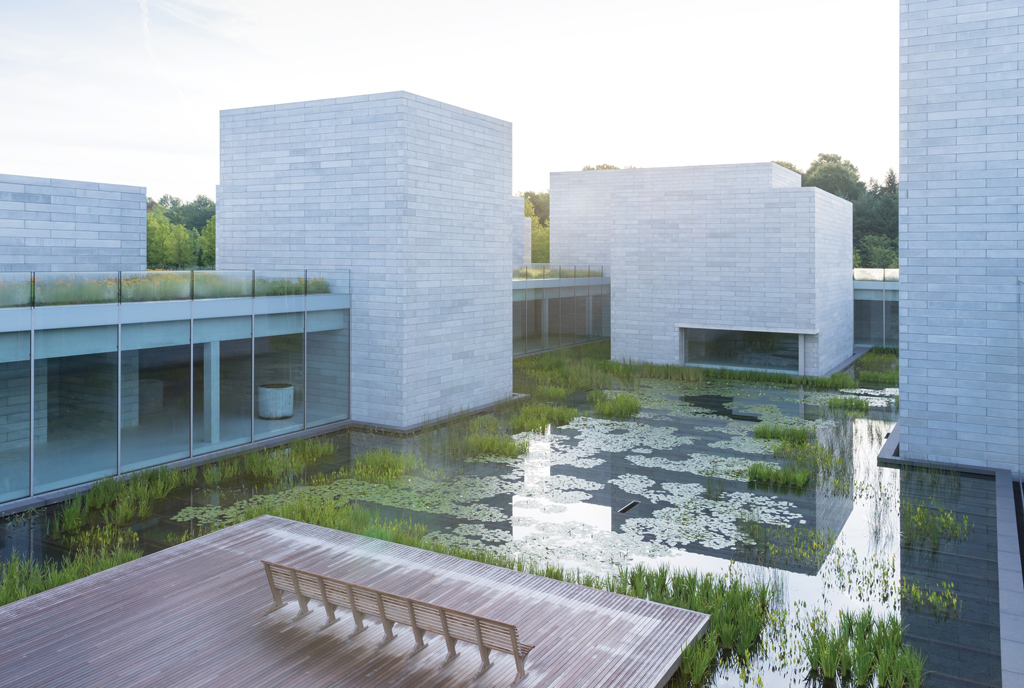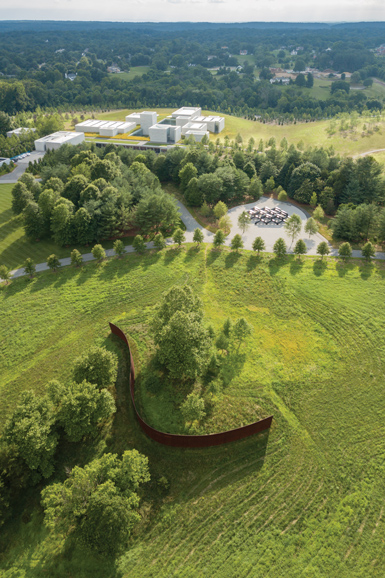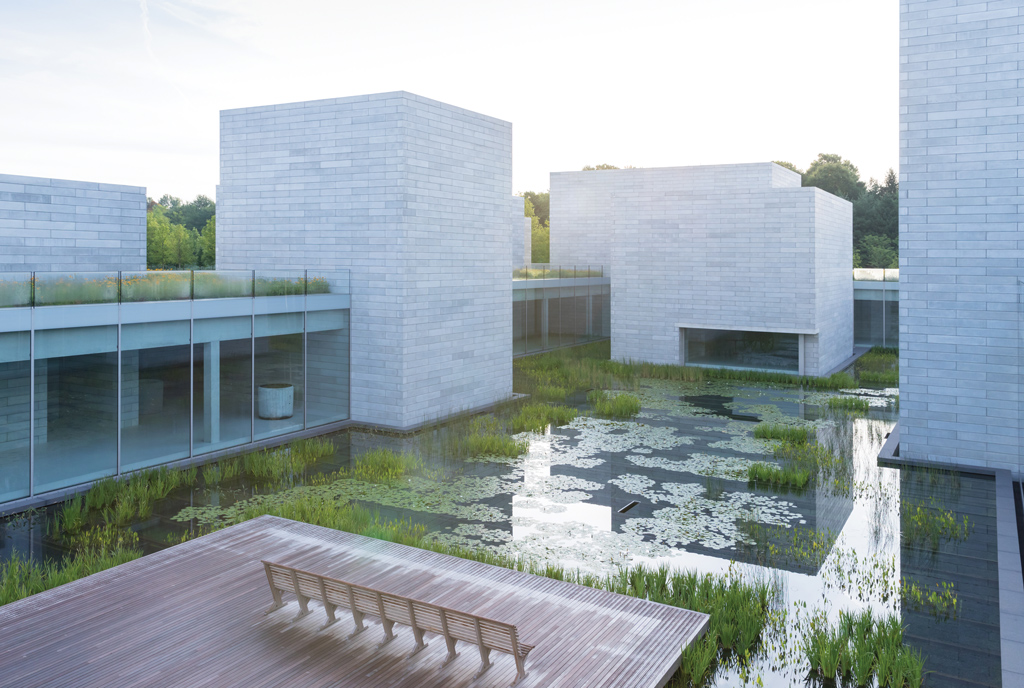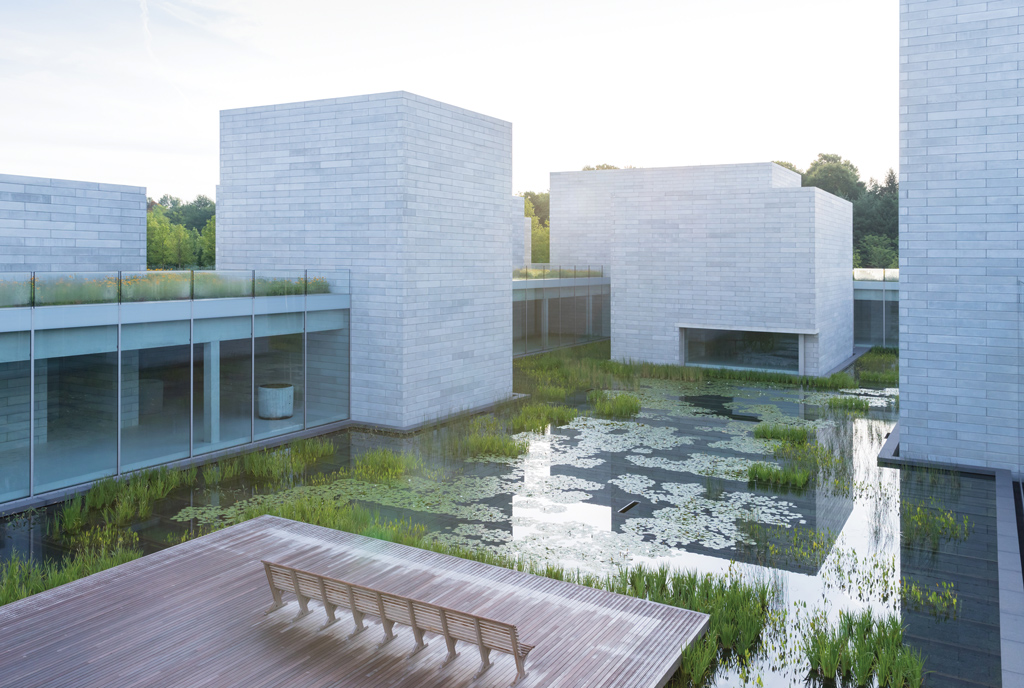[ad_1]

The water court at the Glenstone Museum Pavilions.
IWAN BAAN/COURTESY GLENSTONE MUSEUM
Cloistered on a sylvan estate that was once used by a fox-hunting club in the wealthy Washington, D.C., suburb of Potomac, Maryland, the Glenstone Museum was for many years something of a mystery.
When it first opened to the public in 2006, visits to its 30,000-square-foot Charles Gwathmey–designed exhibition building and art-filled grounds were available only by appointment, a few days a week. Its founders—Mitchell Rales, an industrialist with an estimated net worth of around $4 billion, and his wife, Emily Rales, a former art dealer—rarely spoke to the press, and they were reticent about their long-term plans. By 2013, when they announced their intention to create a second, much larger building for the museum, fewer than 10,000 people had ever visited.
“It takes time to build an institution,” Emily told me recently, recalling those early years. “The intent was always there to be welcoming and to open our doors—it just took us a little while to get there.” Demand to see their formidable collection of predominantly postwar and contemporary art, which now numbers 1,300 works, ended up being enormous, she said. “It all boils down to very simple practical matters concerning infrastructure, parking, and staff. We had very little of those three things.”
That has changed. On October 4, the expansion—a 204,000-square-foot structure designed by New York–based architect Thomas Phifer, plus an ambitious landscaping initiative by PWP Landscape Architecture on Glenstone’s 230 acres—will be inaugurated. But on a hot June afternoon, as art was still being carefully installed, I toured the grounds and the building, which are astonishing in both their scale and their attention to detail. Once open, the enlarged Glenstone will rank as one of the singularly most ambitious and impressive private art museums in the world today.

An aerial view of the Glenstone Pavilions with Richard Serra’s Contour 290, 2004, and Tony Smith’s Smug, 1973/2005.
IWAN BAAN/COURTESY GLENSTONE MUSEUM
Phifer’s building is one of sumptuous simplicity, made of wood, glass, and some 26,000 blocks of concrete that went toward creating 11 galleries—Pavilions, in Glenstone’s parlance—many of which are devoted to long-term displays of pieces by single artists, including Brice Marden, Cy Twombly, Charles Ray, and others. A lone space in the initial presentation will be devoted to 65 pieces by 52 artists from the museum’s collection, which is rich with the kind of Abstract Expressionism, Minimalism, and Conceptualism that few museums can afford these days. (The museum has declined to state the cost of the expansion.)
“Glenstone is about this very contemplative and serene and minimal environment,” Emily said. “The architecture doesn’t try to outshine the art—it’s in harmony with it.” The Raleses were intent on finding a mid-career architect, and were taken with the North Carolina Museum of Art that Phifer completed in Raleigh in 2010, “seeing how sensitive he was to the landscape and the art,” she said. The building he designed for Glenstone has a potent but unusually warm sense of quietude that recalls Peter Zumthor’s Kolumba museum in Cologne, while its natural light brings to mind Robert Irwin’s subtle renovation of Dia:Beacon in Upstate New York. “We don’t want any light bulbs to be turned on during the day,” Phifer said, “so that you feel the movement of the light and the atmosphere of the light and the changing of the light from season to season.”
“More than anything else, we were looking for a slow, immersive experience, so that you begin to slow down and move through the landscape and move through the buildings with all these moments of reflection and pause,” Phifer said. He connected the eleven galleries with hallways situated around a sprawling water garden dotted with water lilies—a scene straight out of Monet. “We wanted to make a room that was about the sky, the light, and the water,” said Phifer, mentioning Ryōan-ji, the Zen temple in Kyoto, Japan, as an inspiration for that tranquil open-air space. A long wooden bench by artist Martin Puryear, whose work the Raleses have collected in-depth, sits outside in the water garden.
In conceiving Glenstone’s expansion, Emily said, the team asked themselves, “How do we avoid museum fatigue?” and “How do we extend the museum experience so that it can cover maybe three hours, maybe five hours?” It’s easy to imagine a visit consuming half a day or more. The 50,000 square feet of exhibition space in the expansion is equal to that of the Whitney Museum in New York, and the grounds include a towering topiary piece by Jeff Koons, a Janet Cardiff and George Bures Miller sound work harbored in dense woods, and large-scale sculptures by Richard Serra and Ellsworth Kelly. (The original Gwathmey building has 9,000 square feet of exhibition space.) There are two cafés and an arrival area with a bookshop, both situated away from the main building, so that the art experience is unimpeded by food and commerce, à la the Menil Collection in Houston. (Like the Menil, admission is free.) The museum is open four days a week.

Jeff Koons’s Split-Rocker, 2000, is the first outdoor sculpture visitors see at Glenstone Museum.
IWAN BAAN/COURTESY GLENSTONE MUSEUM
Even as the expansion progresses, the Glenstone collection continues to grow and change. “Mitch and I make all the decisions ourselves” regarding acquisitions, Emily said. They prefer that to delegating those choices to advisers because “it’s just too much fun and we just love it too much,” she continued. “That said, we have very strict guidelines that we adhere to.” Among them is an intense focus on quality: “We’re very methodical about going after the best of the best,” she said. Any artist they buy must also have been active for 15 years, and they keep a close eye on what the nearby National Gallery of Art, whose board Mitchell is on, and the Hirshhorn Museum own. “We do feel very much connected to this community of Washington institutions, and we don’t want to duplicate their holdings,” she said.
They have shown a rare penchant for being patient in their pursuit. Among their prized artworks are key pieces by Willem de Kooning, Louise Bourgeois, and Jasper Johns, as well as what is perhaps David Hammons’s most famous one: How Ya Like Me Now? (1988), a roughly 13-by-19-foot portrait of a white-skinned version of Jesse Jackson accompanied by the text of that question. It was first shown in a public art exhibition in Washington, D.C., the year it was made, when it was vandalized with sledgehammers. (Hammons subsequently placed a fence constructed from those tools in front of the work.) “He’d held onto it for 20 years,” Emily said. “We were very persistent and we were willing to wait and we just kept asking whether or not he would be OK letting go of it, and he finally agreed, which was very exciting.”
One of their most recent purchases is Allan Kaprow’s Yard (1961)—a sprawl of rubber tires that can be reconfigured each time it’s installed. It joins a collection that has been adding photography, large-scale installations (another reason for the expansion), time-based work—including 144 pieces from the Canadian collector Ydessa Hendeles—as well as work from beyond the United States and Europe, like Japanese Gutai and Brazilian Neo-Concrete. “It’s by no means a finished project,” Emily said. “We still have a lot of work to do, looking at other traditions. It’s just going to take some time to build.”
A version of this story originally appeared in the Fall 2018 issue of ARTnews on page 94 under the title “Maximum Minimalism.”
[ad_2]
Source link




